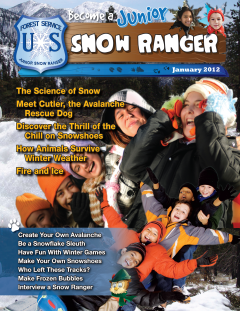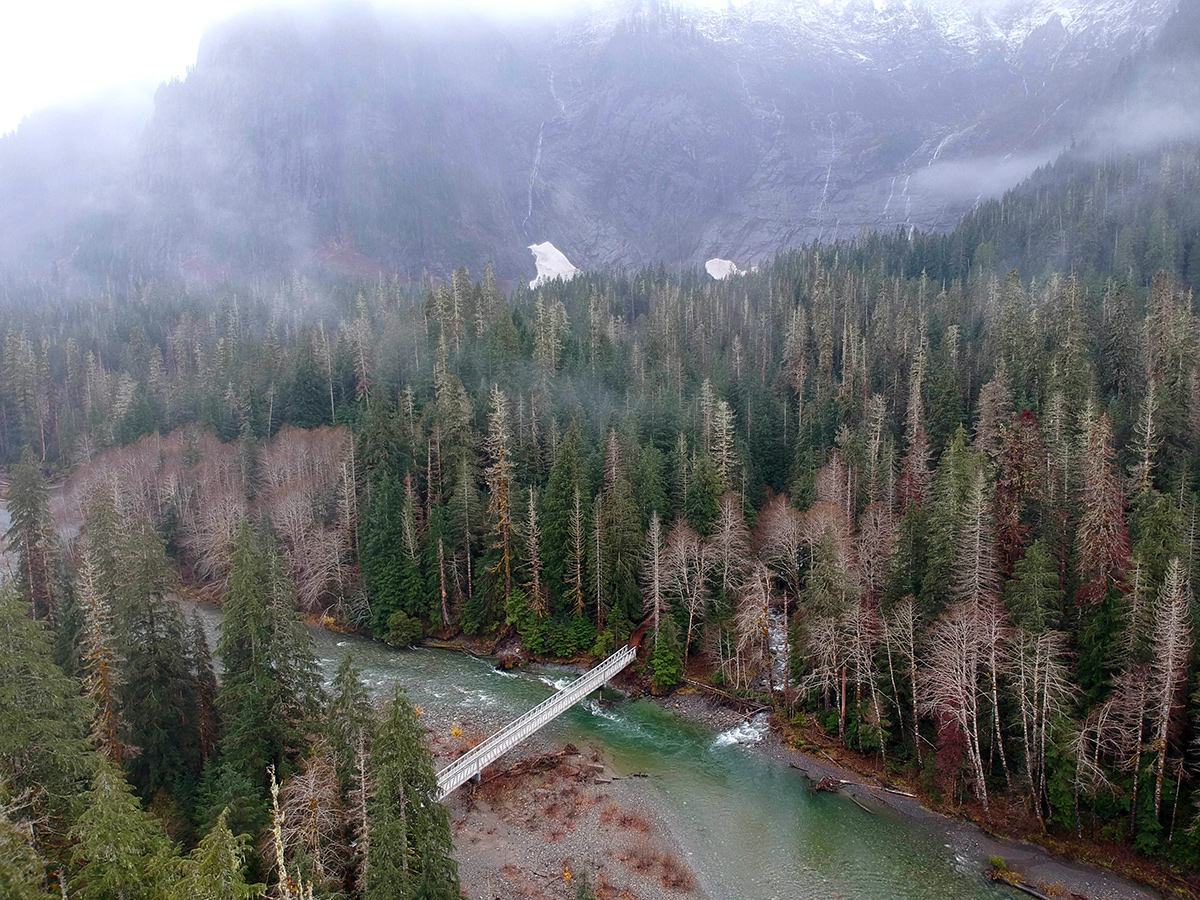Let’s face it. New Year’s resolutions sometimes lead us to failure. The obligatory lose weight, travel, or get a new job sometimes doesn’t pan out the way we had hoped.
So, let’s rethink resolutions. Let’s resolve not to resolve and instead look for great opportunities that will make 2022 a year of idea, experiences, and memories.
Our ideas, of course, focus on the great outdoors, particularly national forests and grasslands. Historically, the outdoors is where many an influential thinker, writer and artist found inspiration. So, maybe there is something to this outdoor stuff after all.

Take a hike
Again, it’s an opportunity, not a resolution. Traveling to a national forest or grassland is a great idea, but we would be just as happy if you spent time outdoors – local or state parks, other federal lands, and waters, including something from as small as a creek or pond to as large as a marine sanctuary.
If you ask any Forest Service employee – or anyone, for that matter – they are likely to have their own favorite spots, as I do. Research Katharine Lee Bates’ infamous poem, and you’ll likely learn my favorite place. There are many great outdoor places across the country. Many are known, many not.
In New Hampshire, for instance, The White Mountain National Forest is home to the oldest and continuously used trail in America. There are more than 1,600 miles of trails on the White Mountain, but it’s Crawford Path that carries that distinction. Originally built in 1819, the 8.5-mile section is along the Presidential Range ridgelines that converge with the famed Appalachian Trail. The trail continues across the alpine zone and a section of the trail just north of Mount Pierce on the 6,288-foot Mount Washington, the highest peak east of the Mississippi. In 1994, Crawford Path became a designated National Recreation Trail as part of festivities on the trail’s 175th anniversary.
A bonus to taking a hike? You might lose a few pounds, but you’ll gain a lot more benefits to your health and wellbeing. And if you don’t live near New Hampshire, we have 160,000 miles of trails across 42 states and Puerto Rico, including parts of the Continental Divide, Appalachian, Pacific Crest, Arizona, Florida and Nez Perce national trails.

Become a scientist
You don’t need a degree to be a citizen scientist. There are several projects you can join, such as helping to monitor Southeast Alaska’s bat populations by surveying with a bat detector and an ultrasonic microphone. If you’re frightened by bats, and you really should not be, try sitting next to a pond and observe the behaviors of five migratory dragonfly species. If you don’t see a project near you, contact your nearest national forest or grassland or a research station to see if there are other opportunities.
You also could venture onto a national forest or grassland as a participant in annual bird counts hosted by the Audubon Society and Cornell Lab of Ornithology. Hundreds of thousands of people help record bird observations, which in turn help us understand how birds are affected by environmental changes.
The Forest Service also supports partnerships that have citizen science opportunities, such as the Greater Atlanta Pollinator Partnership – and you don’t even have to leave home. Simply plant a pollinator garden, which can give you hours of enjoyment by noting which pollinators stop by and for how long. The data you collect will help foster pollinator conservation network across Georgia. If you don’t live in Georgia, find a pollinator project near where you live or start one.
Become an outdoor educator
Even if you are not a teacher or children’s group leader (or you don’t have any children) learn about the outdoors through our Kids and Educators and Parents pages. The Forest Service has tons of ideas, including coloring pages, kid-friendly science journals, videos and a connection to Smokey Bear and Woodsy Owl. At the beginning of 2022, you’ll want to take advantage of lessons in the Junior Snow Ranger activity book with instructions on how to create an avalanche, make snowshoes or become a snowflake sleuth. Of course, the big-ticket item is making frozen bubbles. Who could resist? All you need is a measuring cup, a bowl, spoon and bubble wand. Oh, and below-freezing temperatures. It’s a great way to get rid of the winter doldrums. As the weather warms, dive into the Junior Forest Ranger booklet also available in Spanish, Guardabosques Juvenil.
Look up and dream

The Forest Service has plenty of night-sky awesomeness, and you don’t need a telescope. The Cosmic Campground International Dark Sky Sanctuary is a big draw on the Gila National Forest in New Mexico. It is the first such sanctuary on Forest Service lands and only one of 14 certified International Dark Sky Association sanctuaries in the world. To qualify, the lands must have an exceptional or distinguished quality of starry nights. The campground has a 360-degree, unobstructed view of the night sky and plays host to star parties. For more information on dark skies, light pollution, visit the International Dark Sky Association.

Win a contest
There are two contests that reward you for your photos and stories about visits to federal public land and water sites. Share Your Story is an amateur writing contest where you can put pen to paper to tell others about your experiences in the great outdoors. Look for updates about the 2022 contest season coming soon. Or try the Share the Experience federal recreation public lands photo contest. Open to amateur photographers, but you better hurry. Deadline to enter this year is Dec. 31. But there’s always next year.
There are plenty more opportunities on national forests and grasslands and other federal land and water sites. You are in control. No wishful thinking. Just open opportunities.






